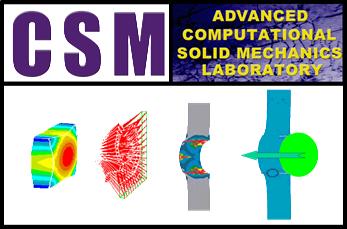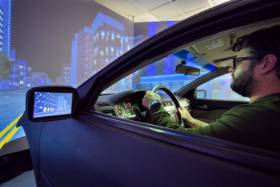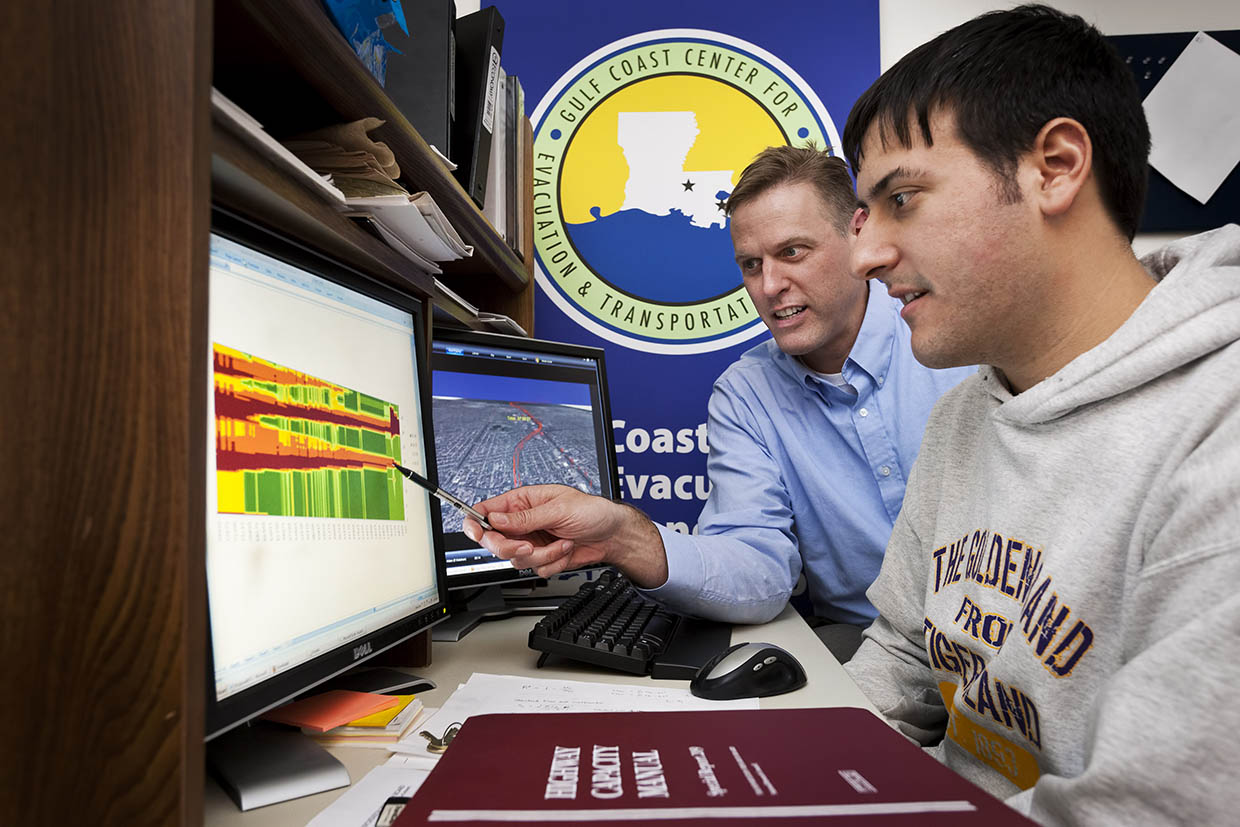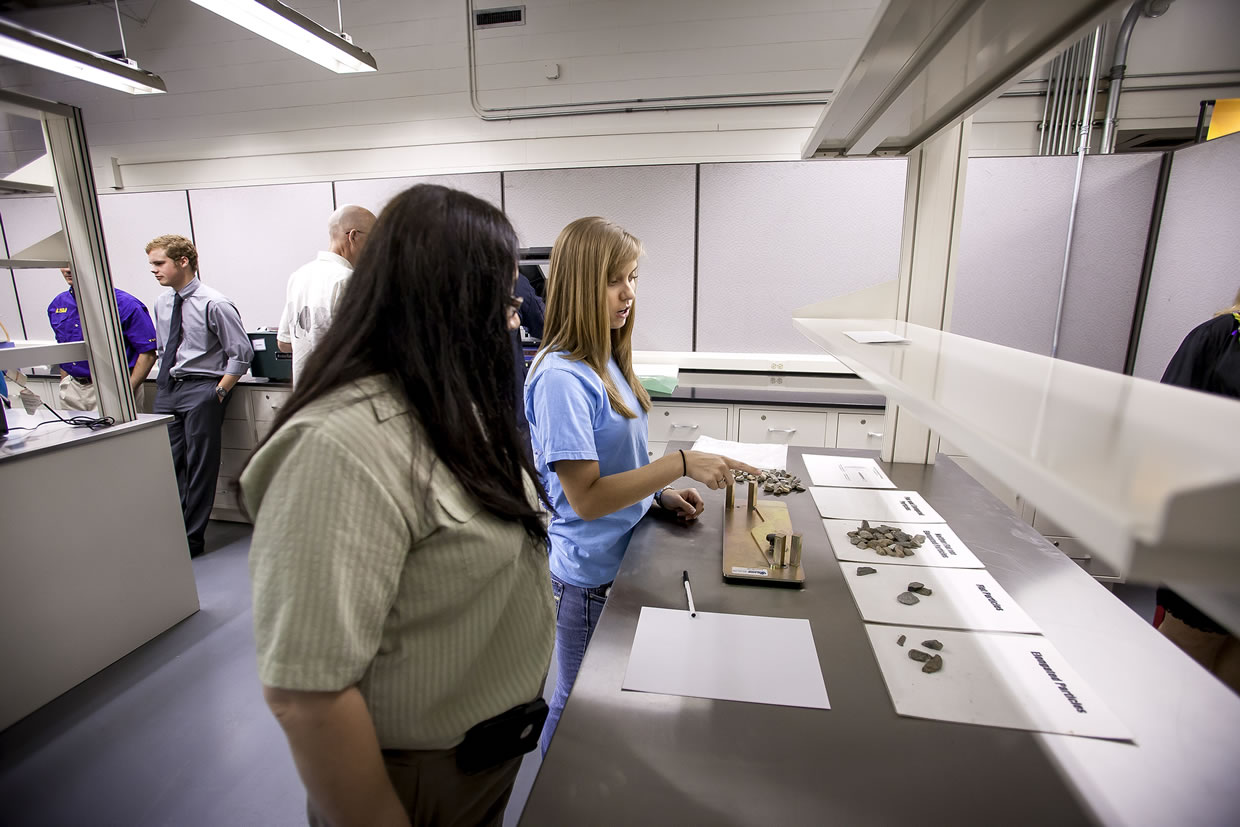Research Facilities
Materials Under Extreme Loading Laboratory (MATEX)
 The MATEX testing facility at LSU (Materials under Extreme Loadings) conducts impact
damage in materials and structures using both the Split Hopkinson Bar and the high velocity Impact Tester. This facility helps researchers to characterize the material
behavior of materials when subjected to impact loadings. The characterization focuses on the microstructural effects
of materials and considering size effects on the macroscopic behavior of metals, polymers
and rocks. This leads to better constitutive relations for the solution of physical
problems due to impact loads. The MATEX laboratory houses extensive testing facilities
in impact and damage for testing of metals and structures using the Hopkinson Bar
equipment as well as the Impact Tester.
The MATEX testing facility at LSU (Materials under Extreme Loadings) conducts impact
damage in materials and structures using both the Split Hopkinson Bar and the high velocity Impact Tester. This facility helps researchers to characterize the material
behavior of materials when subjected to impact loadings. The characterization focuses on the microstructural effects
of materials and considering size effects on the macroscopic behavior of metals, polymers
and rocks. This leads to better constitutive relations for the solution of physical
problems due to impact loads. The MATEX laboratory houses extensive testing facilities
in impact and damage for testing of metals and structures using the Hopkinson Bar
equipment as well as the Impact Tester.
Advanced Computational Solid Mechanics Laboratory (CSM)
 Dr. George Z. Voyiadjis, Boyd Professor, is the director of the Advanced Computational
Solid Mechanics Laboratory (CSM). The CSM lab promotes research in materials science
at LSU and in conjunction with other research facilities and teams around the world.
By specializing in numerical analysis and experimentation at the nanoscale, CSM Lab
pioneers the advancement of knowledge in this emerging area of science. Engineers,
scientists, and technicians design new products for many reasons: to increase productivity
and efficiency in the industrial process, to reduce the cost of manufacturing, to
replace existing products that are aging, and to add new features that will benefit
people's lives. Throughout the design process, selection and preparation of proper
materials is crucial to achieving the desired result. As researchers understand more
of how and why materials behave under real-world conditions, they can use that knowledge
to create materials that are stronger, lighter, tougher, safer, etc. than those that
are commercially available today. Building on the discoveries of past research efforts,
this laboratory uses information from experiments and numerical simulations with materials.
This laboratory, in conjunction with CCT uses advanced cyberinfrastructure –high-speed
networks, high-performance computing, advanced data storage and analysis and hardware
and software development-to properly characterize material behaviors.
Dr. George Z. Voyiadjis, Boyd Professor, is the director of the Advanced Computational
Solid Mechanics Laboratory (CSM). The CSM lab promotes research in materials science
at LSU and in conjunction with other research facilities and teams around the world.
By specializing in numerical analysis and experimentation at the nanoscale, CSM Lab
pioneers the advancement of knowledge in this emerging area of science. Engineers,
scientists, and technicians design new products for many reasons: to increase productivity
and efficiency in the industrial process, to reduce the cost of manufacturing, to
replace existing products that are aging, and to add new features that will benefit
people's lives. Throughout the design process, selection and preparation of proper
materials is crucial to achieving the desired result. As researchers understand more
of how and why materials behave under real-world conditions, they can use that knowledge
to create materials that are stronger, lighter, tougher, safer, etc. than those that
are commercially available today. Building on the discoveries of past research efforts,
this laboratory uses information from experiments and numerical simulations with materials.
This laboratory, in conjunction with CCT uses advanced cyberinfrastructure –high-speed
networks, high-performance computing, advanced data storage and analysis and hardware
and software development-to properly characterize material behaviors.
Driving Simulator Lab
 The driving simulator lab hosts the LSU Driving Simulator, a full-sized passenger
car (Ford Fusion) combined with a series of cameras, projectors and screens to provide
a high fidelity virtual environment that offers a high degree of driving realism.
It provides a one degree of freedom motion simulation to make a driver experience
similar driving efforts as in an instrumented vehicle. Its open architecture software
tools allows for data collection during simulation experiments, and creation of new
networks and virtually an infinite number of simulation scenarios. Vehicle simulation
makes it possible for inexpensive alternatives and sometimes impossible (unethical
or safety implications) field tests to be undertaken in the lab. Research conducted
in the lab include safety in work zones, examining driving behavior of distracted
drivers, testing driver reactions and performance under varying categories of hurricane
winds, and development of a connected-vehicles simulation test-bed. The lab is also
capable of examining the effects of different levels of task complexity on visual
fixation strategies and visual stimulus recognition, determining the effect of road
signage, road type and other factors on driver performance, testing driver reactions
and performance with new in-vehicle technology devices, and determining effects of
fatigue and other distraction levels on driving performance. Such experiments advance
the state of the art in driving simulation, and do result in valuable findings that
may save lives.
The driving simulator lab hosts the LSU Driving Simulator, a full-sized passenger
car (Ford Fusion) combined with a series of cameras, projectors and screens to provide
a high fidelity virtual environment that offers a high degree of driving realism.
It provides a one degree of freedom motion simulation to make a driver experience
similar driving efforts as in an instrumented vehicle. Its open architecture software
tools allows for data collection during simulation experiments, and creation of new
networks and virtually an infinite number of simulation scenarios. Vehicle simulation
makes it possible for inexpensive alternatives and sometimes impossible (unethical
or safety implications) field tests to be undertaken in the lab. Research conducted
in the lab include safety in work zones, examining driving behavior of distracted
drivers, testing driver reactions and performance under varying categories of hurricane
winds, and development of a connected-vehicles simulation test-bed. The lab is also
capable of examining the effects of different levels of task complexity on visual
fixation strategies and visual stimulus recognition, determining the effect of road
signage, road type and other factors on driver performance, testing driver reactions
and performance with new in-vehicle technology devices, and determining effects of
fatigue and other distraction levels on driving performance. Such experiments advance
the state of the art in driving simulation, and do result in valuable findings that
may save lives.
Structural Systems Testing Laboratory
Testing of structural components and subsystems is conducted using a 550-kip MTS tall load frame equipped with an MTS Flextest SE controller and National Instruments cDAQ-9178 data acquisition system with strain, thermocouple, voltage, and accelerometer modules. Measurement capabilities include strain gages and Linear Variable Differential Transformers (LVDTs). Hydraulic systems in the lab are powered with state-of-the-art pumps (MTS SilentFlo series). A variety of loading tips, spreader beams and custom fixtures are available.
In the near future (2014), the lab will be equipped with a strong reaction floor to allow testing components with a wider footprint. It will also allow setting multiple tests simultaneously.
Gulf Coast Center for Evacuation & Transportation Resiliency

The Gulf Coast Research Center for Evacuation and Transportation Resiliency, under the direction of Dr. Brian Wolshon, is a collaborative effort between the Louisiana State University's Department of Civil and Environmental Engineering and the University of New Orleans' Department of Planning and Urban Studies. The theme of the LSU-UNO Center is focused on Evacuation and Transportation Resiliency in an effort to address the multitude of issues that impact transportation processes under emergency conditions such as evacuation and other types of major events. This area of research also addresses the need to develop and maintain the ability of transportation systems to economically, efficiently, and safely respond to the changing demands that may be placed upon them.
For more information about the Gulf Coast Center for Evacuation & Transportation Resiliency, visit them online at http://www.evaccenter.lsu.edu/
Center for River Studies
The Center for River Studies is a collaborative partnership between the Coastal Protection
and Restoration Authority and LSU. The primary focus of the Center is to operate one
of the world's largest physical models of the Mississippi River to produce qualitative land-building
results associated with sediment diversion in the lower river. Based on exact parameters
of the river's physical an dynamic properties, the model flows sediment and water,
covering a 14.000-square-mile section of southeast Louisiana. The lower Mississippi
River Physical Model, a 90 x 120 foot movable bed, is one of the largest of its kind
in the world and the facility was specifically designed for the model. The foundation,
overhead gantry crane, walk-bridge, interior drainage, electrical system, and data
infrastructure were all designed to facilitate the model and exhibit. One hour of
model testing time is equivalent to one year of natural river time, therefore 100-year
project scenarios take approximately 100 hours on the model. Additionally, 20 high-resolution
digital projectors are mounted above the model and are able to merge together and
project aerial photographs, project features, diversion outputs, and other simulations/animations.
world's largest physical models of the Mississippi River to produce qualitative land-building
results associated with sediment diversion in the lower river. Based on exact parameters
of the river's physical an dynamic properties, the model flows sediment and water,
covering a 14.000-square-mile section of southeast Louisiana. The lower Mississippi
River Physical Model, a 90 x 120 foot movable bed, is one of the largest of its kind
in the world and the facility was specifically designed for the model. The foundation,
overhead gantry crane, walk-bridge, interior drainage, electrical system, and data
infrastructure were all designed to facilitate the model and exhibit. One hour of
model testing time is equivalent to one year of natural river time, therefore 100-year
project scenarios take approximately 100 hours on the model. Additionally, 20 high-resolution
digital projectors are mounted above the model and are able to merge together and
project aerial photographs, project features, diversion outputs, and other simulations/animations.
L.H. Bossier Asphalt Laboratory
 The L.H. Bossier Asphalt Laboratory is used for undergraduate and graduate classroom
demonstrations and laboratory classes. When not occupied for classes, the lab is used
for student and faculty research involving the composition and qualities of different
types of asphalt, and ways to improve its installation, function and longevity.
The L.H. Bossier Asphalt Laboratory is used for undergraduate and graduate classroom
demonstrations and laboratory classes. When not occupied for classes, the lab is used
for student and faculty research involving the composition and qualities of different
types of asphalt, and ways to improve its installation, function and longevity.
ETEC Hydraulics and Water Distribution Laboratory
The ETEC Hydraulics and Water Distribution Lab provides Civil and Environmental Engineering undergraduate students with an experimental and modeling facility where they can get hands-on experience in the real-time monitoring, control, and modeling of hydraulic systems. The lab, sponsored by Environmental Technical Sales, Inc., currently consists of a series of pipes in various diameters, valves, switches, flow meters and pressure gages that are all connected to two reservoirs for water distribution control problems. This pipe loop system can be configured to operate as independent individual loops, collectively as one unit, or in various configurations. Several PC-based computers are set up, some for running water distribution control and monitoring software and the others running monitoring software and hydraulic modeling software. The real-time monitoring and optimization software equips students with the ability to provide constant flow control according to changing demands, while monitoring main water lines, reservoir levels, water quality, etc. The software also enables continuous monitoring of water quantities and pressures. Extensive renovations are underway that include additional computer workstations to serve as a means to control, monitor, and model tracer movement through the system. Also, a connection system will be put into place to open the channel flume where small turbines will be located. The operation and monitoring of these turbines will also be done at these additional workstations.
Geotechnical Engineering Laboratory
The Geotechnical Engineering Laboratory is equipped with testing equipment for (a) geophysical monitoring: a signal generator (33509B,Agilent) for S-wave excitation, a high-voltage pulser (5077PR,Panametric) for P-wave excitation, a signal amplifier (3944, Krohn-Hite), and a digital oscilloscope (DSOX2024, Agilent) for acquiring transmitted waves, (b) high-pressure testing system: a high-pressure syringe pump which can control the pressure up to 5000 psi and the flow rate as slow as 0.001 mL/min, temperature controller, and (c) standard and specialized soil testing: the geotechnical engineering laboratories are equipped to conduct all the standard physical and engineering properties tests on soils including gradation, specific gravity, Atterberg limits, permeability, shear strength, compaction, and consolidation. One unique feature of the geotechnical laboratories is that possess two true cubical triaxial testing devices (for low and high pressure testing regiomes). These devices are fully equipped with data acquisition systems.
Louisiana Transportation Research Center (LTRC)
Since its creation by the legislature in 1986, the Louisiana Transportation Research
Center (LTRC) has grown to national prominence through its efforts to improve transportation
systems in Louisiana. The center conducts short-term and long-term research and provides
technology assistance, engineering training and continuing education, technology transfer,
and problem-solving services to DOTD and others in the transportation community.
The center, sponsored jointly by Louisiana State University and the Louisiana Department
of Transportation and Development, is largely supported by funding authorized by the
Federal Highway Administration. LTRC's goal is to merge the resources of state government
and universities to identify, develop, and implement new technology to improve the
state's transportation system. LTRC combines the efforts of DOTD and the state's universities
to find innovative solutions to Louisiana's transportation problems.
For more information about the Louisiana Transportation Research Center, visit them online at http://www.ltrc.lsu.edu.